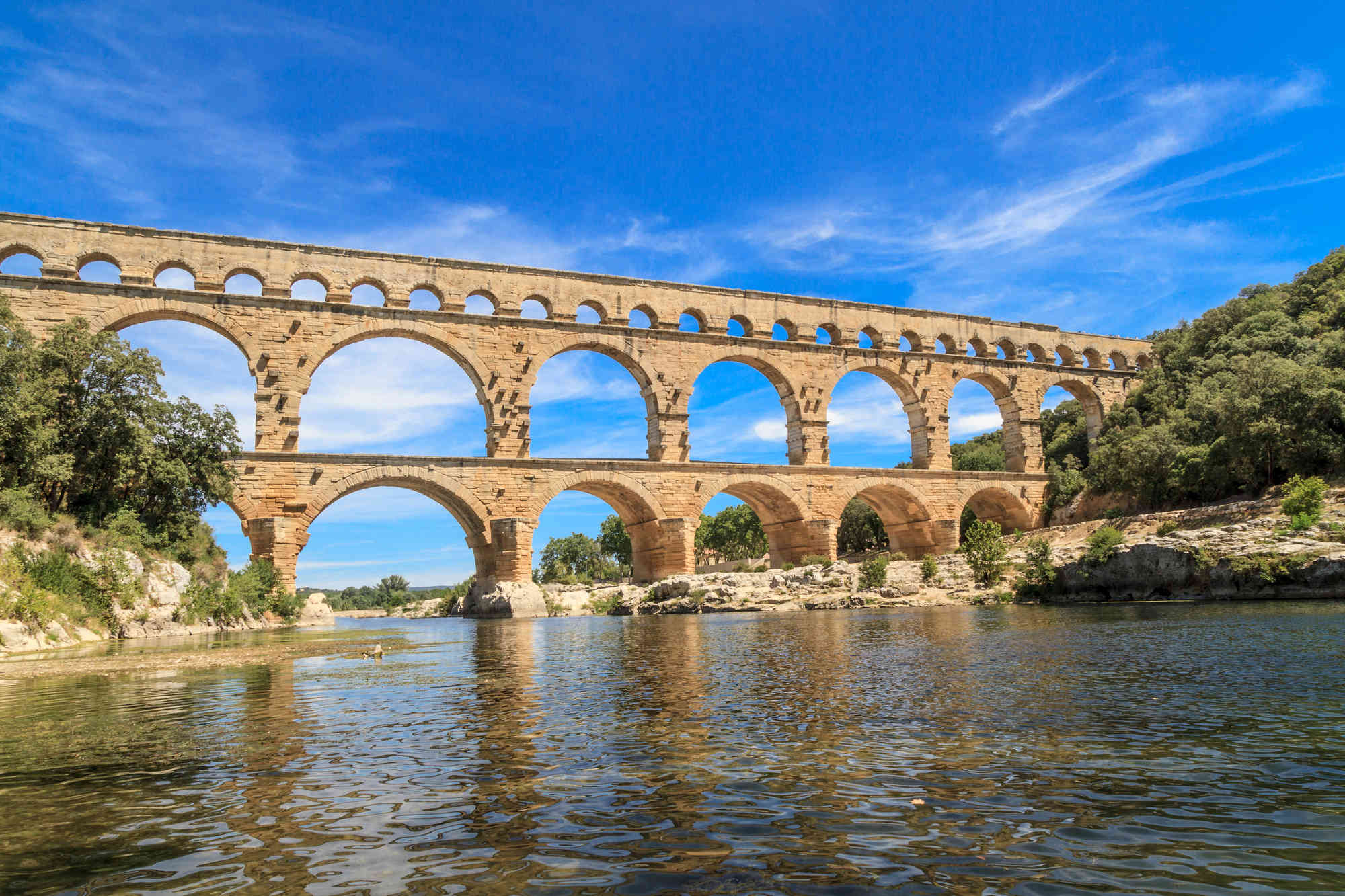In Jordan and, more specifically, in Jerash, there are a lot of monuments and relics, including triumphal arches, colonnaded squares, theaters, baths, temples and wide streets that are well preserved. In Jerash, visitors can witness a unique show: gladiatorial combat and chariot races in its grand theater. This huge hippodrome welcomed nearly 15,000 Romans, and ►
In Jordan and, more specifically, in Jerash, there are a lot of monuments and relics, including triumphal arches, colonnaded squares, theaters, baths, temples and wide streets that are well preserved. In Jerash, visitors can witness a unique show: gladiatorial combat and chariot races in its grand theater. This huge hippodrome welcomed nearly 15,000 Romans, and today, this place allows many tourists to relive these moments with the shows highlighted. In Western Asia, Lebanon is the following country that indicates the passage of the Romans with the construction of the Temple of Jupiter of Baalbek, which began in the year 60 BC. Only after about one hundred and twenty years could the structure be completed. It is presented with columns 23 meters high and 2.2 meters wide and foundation stones of more than 1,000 tons. In addition, there are several temples of Baalbek, including the time of Venus, which is more delicate than the others. In contrast, the time of Bacchus has beautifully decorated ceilings and friezes. In Europe, Diocletian's Palace in Split, Croatia, is a place tourists should not miss. This luxurious palace was built by Emperor Diocletian in the year 305, and today, this citadel still stands, allowing travelers to enjoy its incomparable charm. The columns and capitals of the peristyle as well as the mausoleum of the emperor, not to mention the rooms in the palace's basement, are presented as an entire field of discovery. In France in Pont du Gard, tourists will be able to realize how the Romans used excellent means to get what they wanted. In the second century, a colossal aqueduct was erected to meet the water needs of the Colonia Nemausensis. What marks this incredible journey is the Pont du Gard, built with stone blocks weighing more than 5 tons and whose arches rise nearly 50 meters above the valley. Concretely, the technical prowess of the Romans is highlighted in this work. Further afield in England, Vindolanda, Hadrian's Wall was built from 122 to 128. This wall is about 117 km long and is reinforced by forts and turrets. It is now an impressive site, and travelers can even visit its museum, which describes life in the garrisons rather well. They will discover leather shoes, weapons, and jewelry, among others. After that, travelers can make a detour to Housesteads, which is the most protected Roman fort in the country. In Italy, tourists need to go to the Rome Forum. In reality, the story tells that at the foot of Lapis Niger is the tomb of Romulus, the man who founded the great city of Rome. At the time, the faithful came to pray in this place while the citizens gathered at the Mercato di Traiano and Piazza del Foro for their purchases before moving on to the Colosseum for gladiatorial fights. A little further afield, Pompeii is the next place to visit. This site marks the eruption of Mount Vesuvius near Naples, which buried the city and its inhabitants. It was not until 1594 that the town was rediscovered, and today, the streets and houses offer a moving spectacle to people who visit this place. In Albania or, more precisely, in Butrint, travelers can admire the mixture of historical influences with the Roman houses, temples and theaters erected above the earlier remains. These Roman vestiges incorporate relics from the Venetian, Byzantine and Ottoman periods. On the African continent, Libya also experienced the passage of the Romans. It is to Leptis Magna that travelers will have to go. This site has temples, theaters, forums, a circus and Hadrian's baths. For the record, tourists should know that this area was an important commercial point for the Romans because it was from there that olives and exotic animals were sent to Rome. In Morocco, there are the well-preserved ruins of Volubilis. This zone allows travelers to walk the roads to admire ruined houses' mosaics or climb the hill. ◄
